Operated by Clan Cameron Charitable Trust Registered In Scotland SC015649 Copyright © Clan Cameron Museum Scotland


Museum Features
- History of clan Cameron from 14 th century to present day
- The clan’s part in the 1745 Jacobite uprising
- The foundation of the Cameron Highlanders regiment
- Story of the key role of Achnacarry as a WW2 training centre for Commandos
- Clan history archives and reading room
- Gifts for sale featuring the clan Cameron crest or tartan can be found in our shop

Local Historic Sites
The Clan Cameron Museum is located in an area of outstanding natural beauty, close to many other sites of historic interest. Why not extend your stay in Lochaber to include:-
- Fort William
- Commando Memorial
- Caledonian Canal
- West Highland Railway

Museum Exhibits
- WW1 Artillery piece
- Ancient weapons and domestic artifacts
- Historic clothing
- Paintings & photographs
- Displays illustrating important events in the time- line of clan Cameron
Clothing and gifts featuring the clan Cameron crest or tartan are available for sale mail- order in our online shop
Embroidered clan crest casual wear, woollen ties & scarves, the book “History of Clan Cameron”. Other items seen in our shop at the museum can be specially ordered and shipped if required, please email for details of this service
Our New Online Gift Shop Is Now Open

Winter : Open by appointment only - please text/whatsapp Catriona 07900 217975 or email [email protected] to arrange your visit.
Summer : 1 April 2024 - 15 October 2024 Open daily 11am - 3pm
Opening Times

Simon Forder
Historical consultant and author, achnacarry castle.
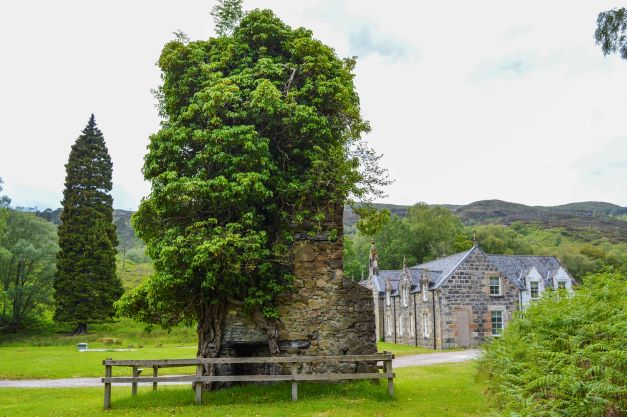
Achnacarry Castle Details
Achnacarry Castle, ruins of C17 tower house of Camerons destroyed C18; also occupied C19 mansion of same name
- Closest To: Spean Bridge
- Access: S.O.A.C. Public Access
- Grid Reference: NN175879
Within the grounds of Achnacarry House is an isolated stone chimney stack which is all that remains of Achnacarry Castle, believed to have been erected in the 17th century for Ewan Cameron of Lochiel, chief of the clan. The Achnacarry Estate does permit walkers across its lands, and there is a small information board about the remains here, but as it is very close to teh mansion house, prior permission should be sought if you wish to look at it in person. It was described as a timber building by Lord MacAuley, who commented that for the Highlands it was a “superb palace”. His cultural bias is likely to mean there was a degree of mockery intended here. What remains and is believed to represent the castle is overgrown with ivy, contains fireplaces on both sides and was therefore a centrally placed feature in a building which in 1727 was depicted as a large house with two chimneys. The chimney has been repaired and bears no features that enable it to be dated; a sign on site states that the building was destroyed by Cumberlands soldiers in 1746 after Culloden.
The lands of Achnacarry formed part of those known from the 15th century as the lands of Loch Arkaig. They was held by the Mackintoshes as vassals of the Lords of the Isles, up until the Lords were forfeited, at which point the Mackintoshes became Crown vassals. When the Captaincy of the Mackintoshes passed to the Dunachton branch of the family, the lands of Loch Arkaig did also, and appear to have been used to guarantee loans from an early date until they were sold in 1666 to the Camerons of Locheil, an earlier lender to Mackintosh of Dunachton. It is only after this date that a house was built on the site, and the name Achnacarry starts to appear in documents. After the destruction of the Jacobite Cameron’s house in 1746, the estates were not returned to the Camerons until 1784, and the chief, Donald, had to accept them being placed in trust until 1818 to prevent him borrowing further against them. In 1834, his son Donald gained the estates and commissioned a grand new castellated mansion. It is likely that any surviving masonry was removed to be reused in the new building, called Achnacarry House.
HES Canmore database entry
Achnacarry Estate Official Website
Snowgoose Apartments
Family run, self catering apartments, 4 miles from ben nevis, clan cameron museum at achnacarry and ka-aig falls, the clan cameron is the principal clan in this area of the west highlands. it was the camerons who met bonnie prince charlie at glenfinnan..
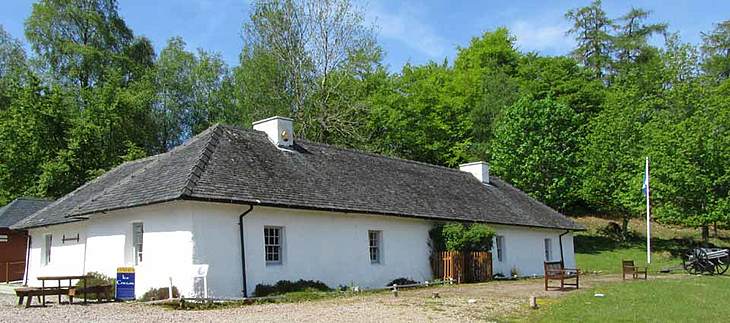
Glencoe and North Lorn Folk Museum
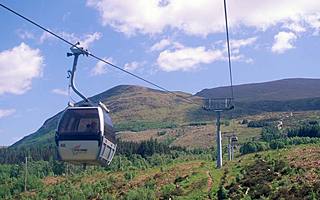
Mountain Gondola on Aonach Mor
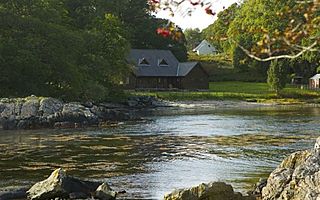
Glenuig Hall by the shore of Loch Ailort
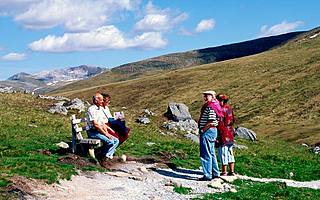
Visitor Centres in Fort William
Attractions and museums around fort william & lochaber, we value your privacy.
We use third party services in order to discover how people are using our site. These services help us provide you with a better experience, by helping us to measure the performance of various content and derive insights about the audiences who view various content.
We rely on cookies to help us provide these services.
Click below to accept the use of cookies on your browser. To learn more, you can read our Cookie Policy .
Login to SpottingHistory.com
Achnacarry castle.
Achnacarry, United Kingdom
Achnacarry Castle is the ancestral home of the Chiefs of Clan Cameron. Ewen 'Eoghainn MacAilein' Cameron, XIII Chief of Clan Cameron, built the highly disputed Tor Castle in the early 16th century. Tor Castle would remain the seat of the Camerons of Lochiel until demolished by his great-great-great grandson, Sir Ewen 'Dubh' Cameron, XVII Chief.
Sir Ewen Cameron wanted a 'more convenient' house, which was further removed from the Clan Mackintosh, Clan Campbell and Oliver Cromwell's garrison at Inverlochy Castle. He built Achnacarry Castle in around 1655 in a strategic position on the isthmus between Loch Lochy and Loch Arkaig. With Sir Ewen's death in the early 18th century his son John Cameron became Clan Chief, soon after which his son, Donald would assume Achnacarry when Lord Lochiel (as his father was known) fled into exile in Flanders after the first Jacobite Uprising.
With the Jacobite army's defeat at the Battle of Culloden in April 1746 the clans retreated into the Scottish Highlands, with Donald taking the lead in re-grouping them. After this last attempt at resistance failed, he and his men took to the mountains. On May 28, 1746, Donald watched as men from Bligh's Regiment under the command of Lt-Col Edward Cornwallis and an Independent Company of Munros, commanded by George Munro, 1st of Culcairn, burned Achnacarry to the ground. Many valued relics and personal possessions were relocated beforehand, but the great fir-planked 'Old' Achnacarry was left in ashes.
In 1802 Achnacarry, which had spent the last fifty or so years in ruin, was rebuilt under Donald Cameron, XXII Chief of Clan Cameron as a Scottish baronial style home, although this 'New Achnacarry' is still referred to as a castle. His wife Anne née Abercromby engaged James Gillespie as architect.
The current building and the surrounding estate gained fame as the Commando Training Depot for the Allied Forces in the World War II from March 1942 to 1945. British Commandos, United States Army Rangers and commandos from France, the Netherlands, Norway, Czechoslovakia, Poland and Belgium trained there. Each training course culminated in an 'opposed landing' exercise around the area of nearby Bunarkaig on Loch Lochy As live ammunition was used, there were some casualties whilst training at Achnacarry. According to the Daily Telegraph, some 25,000 commandos completed training at the centre during the four years it was in use. The castle also suffered some damage due to fire. Several military associations still sponsor a Commando march either annually or from time to time. Generally it is a timed seven mile march, in full battle gear, backpack and combat boots, from Spean Bridge (site of the striking Commando Memorial) to Achnacarry.
The Clan Cameron Museum is located in a cottage on the castle's grounds. Displays include the clan's legends, chiefs, slogans, history, clan lands in Lochaber, and notable clansmen. Other exhibits include the castle and estate's history, the Queen's Own Cameron Highlanders, and Prince Charles Edward Stuart, known as 'Bonnie Prince Charlie'.
- Castles and fortifications in United Kingdom
Submit Comments
More Information
Interesting sites nearby, user reviews.

Featured Historic Landmarks, Sites & Buildings
Exploring the history of northern poland, discovering slovenia's historic wonders, historical gems of costa verde, historic site of the week, rosenborg castle.
Rosenborg Palace was built in the period 1606-34 as Christian IV’s summerhouse just outside the ramparts of Copenhagen. Christian IV was very fond of the palace and often stayed at the castle when he resided in Copenhagen, and it was here that he died in 1648. After his death, the palace passed to his son King Frederik III, who together with his queen, Sophie Amalie, carried out several types of modernisation.
The last king who used the place as a residence was Frederik IV, and around 1720, Rosenborg was abandoned in favor of Frederiksborg Palace.Through the 1700s, considerable art treasures were collected at Rosenborg Castle, among other things items from the estates of deceased royalty and from Christiansborg after the fire there in 1794.

No products in the basket.
Return to shop
- Isle of Skye
- North East 250
- North Coast 500
- Glencoe and West Highlands
- Outlander Tours
- Whisky Tours
- Custom Tour
- Invergordon Shore Excursions
- Ullapool Shore Excursions
- Edinburgh Shore Excursions
- Greenock Shore Excursions
- from Inverness
- from Edinburgh & Glasgow

Clan Cameron Tour from Inverness
Enjoy the Private Clan Cameron Day Tour which leaves from Inverness. The Inverness Tour Guides entertain and share local knowledge while you travel in style and comfort in our air conditioned vehicles. Tours priced per car for up to 7 of your passengers.
Visit amazing locations; Commando Memorial, Glenfinnan, Fort William, Achnacarry Castle and Culloden Battlefield. Hear the stories of the clan as we drive along.
Collection from within 16 miles of Inverness included in the price.
Book now! Get instant confirmation of your calendar appointment.
£ 680.00 11 hours
Scroll calendar to select your date & time or pick a guide to check their availability. — No Preference — Hugh Ian Laura Dave Jenni Graeme
- Description
Why Choose Us
Clan cameron tour from inverness – itinerary.
On the Clan Cameron Tour from Inverness our first visit is to the Commando Memorial. Then we spend the rest of the morning getting to know Cameron country. We will visit the Cameron areas of Glen Nevis and Fassifern and see Glenfinnan because of the 1745 Rising. There will be free time for lunch in Fort William following which we will visit the ruined Cameron stronghold of Torcastle. Next we’ll see the clan seat, Achnacarry, and the Clan Cameron Museum followed by the heartland of the Dark Mile, the Cia-aig Falls and Loch Arkaig. After returning to Inverness our last visit of the day will be to the Clan Cameron stone on Culloden Battlefield.
Commando Memorial
The army made great use of Achnacarry Castle during WWII, with the blessing of the chief of the Camerons. Special Forces used it as the secret base and centre for training in Britain and as a result it became known as Castle Commando, In order to commemorate these heroic soldiers the Commando Memorial was created, in 1952. It stands on a hill above Spean Bridge, a memory in bronze, because this rough country was their training ground.
We include Glenfinnan because, without the support of 800 Camerons, the 1745 Rising would never have got off the ground. The morning of 19th August 1745 saw Bonnie Prince Charlie waiting patiently, but by the afternoon he was worried. No support seemed to be forthcoming. Then they heard the bagpipes, and Clan Cameron came marching down the glen. The 1745 had begun! The National Trust for Scotland run the visitor centre at Glenfinnan which tells more of the story.
Achnacarry Castle
The name means the field of the fish trap. Sir Ewan Cameron built the first castle here in the mid-1600’s, but the British army burned it, in 1746. It was over half a century until the new castle was built, in broadly the same location, in 1802. We have already heard how it served in WWII, and now, of course, it is the home of Donald Cameron of Lochiel, 27th chief of the clan. We always manage at least a walk and some exterior photographs here, although we may be able to arrange a visit with your chief if you request it.
Clan Cameron Museum
The Clan Cameron Museum is located in an old cottage, near Achnacarry Castle. It’s many fine displays do an excellent job of illustrating the history of the clan since earliest times. The Cameron Cairn is also located just outside the museum, and much visited by returning clansfolk.
Culloden Battlefield
Culloden Battlefield, site of the last battle on British soil, stands atop a ridge, four miles from Inverness. Here, Bonnie Prince Charlie’s Jacobite army met a final and chilling end. Clan Cameron, led by the Gentle Lochiel stood towards the right wing of the Jacobite front line. The Clan Graves await, on the battlefield and so we will walk you out and show you the stone that marks where those fallen Cameron clansmen are buried.
Some Clan Cameron Snippets
Clan Cameron are one of the oldest, and fiercest, clans in the Highlands. Some tales suggest that they are related to the early Caledonians, but other legends suggest that they originally descend from a son of the Danish Royal Family, in the 780’s AD. Sir Ewan Cameron, 17 th of Lochiel, became chief in 1647. Known as the Ulysses of the Highlands, this man waged successful campaigns against Cromwell’s Forces. His grandson, Donald (the Gentle Lochiel) was a constant support to Bonnie Prince Charlie during the ’45 Rising, and eventually followed his Prince into exile in France.Many Camerons joined the British Army from 1757 onwards, and Allan Cameron of Erracht raised the 79 th Highlanders (later the Queens Own Highlanders) in 1793.
The oak leaf is the plant badge of Clan Cameron. Let us Unite is their motto. The war cry is – Sons Of The Hounds, Come Hither And Get Flesh – because of a great story which we’ll tell you.
Clan Cameron Tour from Inverness – Price
£680 for the private tour and up to 7 of your favourite people
Clan Cameron Tour from Inverness – Departure
The tour departs from your Inverness accommodation, or any transport hub, such as bus station, train station or airport. You tell us, and we’ll be there.

Clan Mackintosh 3 Day Tour
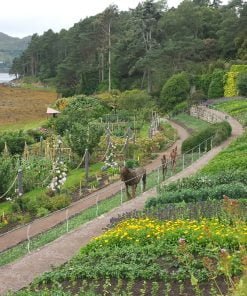
Clan Mackenzie 3 Day Tour
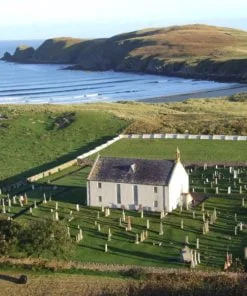
Clan Mackay 3 Day Tour

Clan Fraser of Lovat 3 Day Tour

Clan Cumming 3 Day Tour
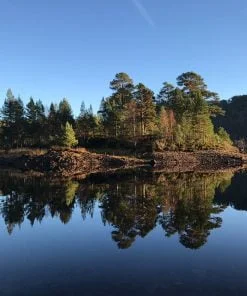
Clan Chisholm 3 Day Tour

Clan Cameron 3 Day Tour

Clan Rose 3 Day Tour
Can each person in the party pay separately?
Driver/Guide licencing in Scotland will only allow us to take one payment per tour, so if people in a party wish to split the cost then they arrange that amongst themselves and make one tour payment to us.
Are entries to the various visitor attractions included?
We don’t include entry to the attractions – and that way we leave the day as flexible as possible for you.
Will I need cash with me?
Most places will accept Visa or MasterCard and some will accept American Express. It is always prudent, though, to bring a little cash with you for unexpected eventualities. You will need GBP, not Euros or Dollars.
What will we be doing for lunch?
You are responsible for paying for your own food & drink during your tour. Lunch could be in a café, pub, restaurant or even a picnic at a beauty spot. Your guide can discuss and advise on options when you meet them.
Find all of our other FAQ’s here
Why Choose Inverness Tour Guides?
Our Inverness Tour Guides are a hand-picked team. As well as being accredited members of the Highlands of Scotland Tour Guide Association, they are all well-recognised as being at the top of their fields. They were chosen because they are great storytellers, are fun to be with, and are uniquely qualified to do what they do well. We are convinced that there is no better team of guides to be found. See their individual profiles here
Performance
Here at Inverness Tours we continually monitor performance. As a result we are confident that we offer long experience and expertise in providing quality, value and enjoyment.
Our Vehicles
Our vehicles are spacious and air conditioned, easily accommodating up to seven passengers. The reclining seats and tinted windows ensure touring in comfort and style.

Our Track Record
Inverness Tours has been taking visitors on world-class tours for more than fifteen years and has been striving to make its exclusive tour business the finest of its kind available in Scotland.
Our Customer Care
The Inverness Tours admin team are frequently complimented on responsiveness, flexibility and care.
Our Environment
Inverness Tours have offset the impact of visitor footfall in the Highlands by contributing financially to environmental and community projects.
Our Precautions
Our COVID19 precautions – Inverness Tours has always carried bacteriological and virucidal disinfectant sprays, disposable gloves and the necessary wipes etc. The vehicles are cleaned on a daily basis. We are investigating and instituting further measures to keep you safe at this current time and into the future.
Our Reviews
All the above contribute to our fabulous back-catalogue of reviews. Check out the TripAdvisor reviews here . You will find that over 98% of our reviews are five-star and as a result we have achieved TripAdvisor’s annual Certificate of Excellence and placement in their Hall of Fame!
What’s included?
The 7-passenger vehicle together with qualified driver/guide is included.
Summary terms and conditions:-
- All tours are exclusive and the same price for between one and seven people. Your booking is considered confirmed once we send out your confirmation.
- While Inverness Tours shall do everything reasonably possible to provide your tour itinerary and/or services as planned, we reserve the right to alter itineraries, guide, transport or accommodation if circumstances require us to do so. If we have to cancel a tour you receive a full refund of the amount paid and that is the extent of our obligation.
- Our normal Cancellation Terms as outlined in the point below have been temporarily relaxed. The relaxation is in relation to any booking which requires to cancel due to COVID-19. Our COVID-19 cancellation terms are outlined here .
- If you wish to change any part of your confirmed booking you should inform us in writing as soon as possible. We will do our best to assist you, but cannot guarantee that we will be able to meet your request. If you cancel a booking up to 30 days in advance you receive a 75% refund of the total paid. Cancellations between 30 and 10 days before the tour receive a 50% refund. There is no refund if you cancel within 10 days of the tour or are not at the organised departure or pick-up point.
- We are happy for you to enjoy bottled water and hard candies while we travel. Other types of food and drink have proved previously to be quite hazardous (on Highland roads) both to yourselves and seat upholstery.
See our full terms and conditions here
Username or email address *
Password *
Remember me Log in
Lost your password?
Old Achnacarry:
New achnacarry:.
Background Colour

Achnacarry Castle

Collections
Administrative areas, archaeology notes.
MyCanmore Images
MyCanmore Text
Castle (Medieval), Military Camp (Second World War)
Site Name Achnacarry Castle
Classification Castle (Medieval) , Military Camp (Second World War)
Alternative Name(s) Achnacarry House
Canmore ID 23732
Site Number NN18NE 2
NGR NN 1750 8797
Datum OSGB36 - NGR
Permalink http://canmore.org.uk/site/23732
Digital Images

View from NE
View full details
Records of the Royal Commission on the Ancient and Historical Monuments of Scotland (RCAHMS), Edinbu
© Crown Copyright: HES

View from SW

Achnacarry Castle, NN18NE 2, Ordnance Survey index card, page number 2, Verso
Records of the Ordnance Survey, Southampton, Hampshire, England
© Crown Copyright: HES (Ordnance Survey Archaeology Division Collection)

Walkover survey, Remains of Achnacarry Castle from W, Overhead Line to CIA Aig Hydro-Electric Station, Achnacarry
Records of Scotia Archaeology Ltd, Aberfeldy, Perth and Kinross, Scotland
© Â Scotia Archaeology

Walkover survey, Remains of Achnacarry Castle from E, Overhead Line to CIA Aig Hydro-Electric Station, Achnacarry

Achnacarry Castle, NN18NE 2, Ordnance Survey index card, page number 1, Recto

Achnacarry Castle, NN18NE 2, Ordnance Survey index card, Recto

Achnacarry Castle, NN18NE 2, Ordnance Survey index card, page number 3, Recto

- Photographs (4)
- Prints and Drawings (4)
- Print Room (2)
- Manuscripts (1)
- Digital Images (11)
- Digital Files (1)
- Council Highland
- Parish Kilmallie
- Former Region Highland
- Former District Lochaber
- Former County Inverness-shire
NN18NE 2 1750 8797
(NN 1740 8794) Achnacarry House (NR)
(Remains of)
OS 6"map, Inverness-shire, 2nd ed., (1903).
See also NN18NE 9.
The first castle at Achnacarry was built towards the end of the 17th century by Sir Ewan Cameron, 17th chief, to which he removed from Tor Castle. ( NN17NW 2 ) It was burned by the Hanoverian soldiers after Culloden. Lord Macaulay described it as "a large pile built entirely of fir wood and considered in the Highlands a superb palace", but there is reason to doubt that it was composed entirely of wood as the ruin of a stone building near the stables of the present Achnacarry Castle is reputed to be part of the old castle. The present Lochiel, K.T., however, considers these ruins to be earlier than this as they have turned the beech avenue, planted shortly before Culloden, slightly out of line, and that the site of the 17th century Achnacarry Castle was elsewhere and its site has disappeared entirely, any stone it may have possessed in its construction having been taken away and re-used (MacCulloch 1938).
The present castle is an imposing square structure, in the modern castellated style (Anderson 1834), of early 19th century date (MacCulloch 1938).
G Anderson 1834; D B MacCulloch 1938.
The remains of Achnacarry House, 140.0m west of the present mansion, consist solely of an ivy-covered chimney, built of dressed stone of mixed sizes, well mortared together. It is in good condition and shows signs of having been restored and rebuilt in part. It measures 4.0m by 1.3m, and is about 8.0m in height.
From the arrangement of the four fireplaces, each with a separate flue, it can be seen that the chimney was centrally placed, the building extending to NE and SW of it, of two storeys, and probably of timber construction. The chimney is complete in itself showing no evidence of adjoining walls, but in the SE end is a small wooden beam to which a timber frame may have been secured.
One of the fireplaces had a wooden lintel.
The avenue of trees would appear to lead directly up to the site of the house and no further and no turn in the line could be observed.
Visited by OS (A S P), 12 July 1961.
The remains of Achnacarry House, as described by Phillips, are at NN 1750 8797.
Visited by OS(NKB) 11 May 1970.
Further Details
Archaeological Evaluation (8 May 2014 - 9 May 2014)
NN 1776 8786 (centred on) An evaluation of two WW2 era shooting butts at the former Commando Basic Training Camp was undertaken 8–9 May 2014, in coordination with Lochaber Archaeological Society, as part of a project to highlight the pivotal role that the estate and other parts of Lochaber played in the wartime training of 25,000 elite troops. Prior to the
evaluation, the Lochaber Archaeological Society had been conducting a systematic metal detector survey of the camp grounds.
The pair of mounds had been built against the NW-facing wall of the walled garden at Achnacarry Castle (NN18NE 9.03), forming part of the Commando training grounds. A slot trench was excavated through one mound. This aimed to prove that extensive bullet marks in the wall above the mounds marked the location of firing practice on the camp. The excavation, which uncovered substantial spent rounds, hessian bag fragments and remains
of the target bases, revealed that the structure had been built up repeatedly as a shooting butt for fired rounds. An assessment of the different kinds of ammunition recovered, which included mostly .45 Automatic Colt Pistol (ACP) bullets as well as 0.455 revolver bullets, .38 revolver bullets, .303 rifle cartridges, and 9mm pistol bullets and cartridges, was made by a local firearms specialist.
A survey was also undertaken of a previously unidentified building (NN18NE 2) foundation to the SW of Achnacarry Castle. The foundation, which was exposed and recorded, has been identified as the site of a guard room.
Report: Highland HER, OASIS and RCAHMS (intended)
Lynn Fraser and Mary Peteranna – Ross and Cromarty Archaeological Services
(Source: DES)
Funder: Lochaber Archaeological Society
MyCanmore Image Contributions
Mycanmore text contributions.
- Accessibility Policy
- Buying Images
- Privacy Notice
- Cookie Policy
- Takedown Policy

© Historic Environment Scotland. Scottish Charity No. SC045925
Search for the name, locality, period or a feature of a locality. You'll then be taken to a map showing results.
Fort William Scotland, Highland
Introduction.
The mid-19th-century designed landscape at Achnacarry comprises parkland, a woodland garden and a terraced garden. There is a remnant of ancient Caledonian Pine Forest in the policies as well as several other notable trees. The Clan Cameron museum is open during the season.
http://portal.historic-scotland.gov.uk/hes/web/f?p=PORTAL:DESIGNATIONS:0
Type of Site
Parkland, woodland garden, arboretum, terrace garden surrounding Achnacarry House and walled garden are framed by mixed shelterbelts and policy woods extending along the shores of Loch Lochy and by riverside orchestrating long views and dramatic effect within a backcloth of Highland scenery.
Location and Setting
Achnacarry is situated off the B8005 some 14 miles (22.5km) north-east of Fort William. The house lies on the south side of the River Arkaig about 1 mile (1.5km) from the south-western shore of Loch Lochy. The policies lie within the river valley between the hills of Lochiel Forest which rise up to Beinn Bhan 2,612' (796m) in the south, and the hills of Glengarry Forest to the north, rising to Sron a' Choire Ghairbh 3,068' (935m). The climate is cold and wet and the soils are acid on granite bedrock. Most of the surrounding land is heather moorland.
Achnacarry is set at the southern end of the Highland Fault in some of the most magnificent upland scenery in Scotland. Long views extend east across Loch Lochy to Ben Nevis and west along Loch Arkaig to the Knoydart peninsula. The tree canopy of the policy woodlands which run along the shores of Loch Lochy are highly significant in the landscape seen from the A82(T).
Achnacarry lies within some 222 acres (90ha) of designed landscape which is bordered by hills on the south and north sides and on the other two by the shores of two freshwater lochs. The garden is situated between the house and the ruins of the old castle near the stables which lie to the west. The shrubbery and walled kitchen garden lie about a quarter of a mile east of the house, near the banks of the river.
Documentary evidence is provided by General Roy's plan of c.1750, the 1st edition OS plan of c.1850 and the 2nd edition OS plan of c.1900. Comparison of these maps shows that the present extent of the policies was established by the mid-19th century.
Landscape Components
Architectural Features
Achnacarry House, listed category B, was designed by J. Gillespie Graham in 1802 and completed in 1837. It was partially burnt during World War II and restored in 1952 by Ian G. Lindsay. The Stables and Offices, listed category C(S), lie to the west of the house and were probably built c.1850. They have been renovated recently. The Ruins, listed category B, are adjacent to the Stables and are thought to be the remains of Achnacarry Castle, built in c.1660 and burnt in 1746. The Dairy and Laundry lie to the west of the Stables. The Sawmill is a wooden building probably built at the end of the 19th century.
The Summerhouse, listed category C, is a small square ruin built of stone. The lower floor used to straddle the riverside path and the upper floor was at the same level as the garden; there is a ruined fireplace at this level. The date of construction is unknown but a ring count of a large ash tree growing in the centre of the ruin dated the tree to c.1780, which suggests that the ruin could be that of the Summerhouse recorded as being burnt in 1746.
The Walled Garden is shown on the 1st edition OS map of c.1850; a decorative Game Larder adjacent to the garden was recently burnt down. The Old Post Office is known to have existed in the early 19th century as a Gardener's House but the date of original construction is uncertain. It was probably built in 1746 and later rebuilt. It has been unoccupied for the last twenty years and is currently being converted into a Clan Cameron Museum. Achnacarry Church, listed category B, was built c.1910 on a small hillock overlooking the old carriage drive. The Burial Ground of the Lochiels, listed category C, lies on a small 'holy' island in Loch Arkaig and is said to have been the site of an early Christian chapel.
The policies were laid out in the mid-19th century as shown in the 1st edition OS plan of c.1850. The layout of the park remained relatively unchanged until the construction of Nissen huts for the Commando Camp during World War II. The ground was restored following the removal of the huts. Sycamore, lime and horse chestnut still grow on the slightly higher and more southerly section. Along Loch Lochy the park is protected from the winds by a broad woodland.
There were two entrance drives quite close to each other running along the south side of the park. The most southerly and slightly higher one is used today. It leads more directly to the house and passes the Old Post Office. The northerly one was more 'picturesque'. It curved down from a vantage point close to the church providing magnificent views of the house and ended in a straight avenue of sycamore and lime trees. It has been suggested that these sycamores could have been planted before 1730 but their exact date is uncertain.
Recently, several clumps of conifers have been planted to commemorate the Silver Jubilee of Queen Elizabeth II, and several specimen trees have been planted by members of the Royal Family.
The woodland at Achnacarry has been the subject of various accounts over the past 400 years. The age range of the trees is mixed although much planting has recently been renewed due to a severe fire in 1942 and the ravages of a more recent gale in 1984. The shelterbelts around the park are planted with mixed varieties including Scots pine, beech, lime and some purple beech dating from the end of the 19th century.
On the slopes of the Lochiel Forest and Monadh Beag are the remains of a stand of the Caledonian Forest which has been severely damaged by fire. At the time of writing, the Scots pines are slowly regenerating in small pockets.
Larch growing on the north bank of the river up to Torr a Mhuilt were clear- felled in 1920 and the area has been reseeded, mainly with birch. Recently, Sir Donald has cleared the understorey of Rhododendron ponticum as part of a five year programme of renewal. There is also an interesting collection of conifers planted before World War I including silver firs, Abies alba, and several Lawson specimens. A good stand of conifers, planted by the 24th Chief, were measured in 1967, and the heights recorded show them to be close in height to some of the largest of their kind in the country.
Woodland Garden
Part of the wood and the garden around the walled garden merge together and form the woodland garden. To the west of the walled garden there is a magnificent line of beech (planted so close together that they are said to be the trees originally just planted in a trench) waiting for the 'Gentle Lochiel' to return from the 1745 rising to plant them. They now form part of an attractive riverside walk. There are also one or two very old trees such as a large lime Tilia x europea about 250 years old, some ancient yews and a Victorian monkey puzzle. To the east of the walled garden there is a small arboretum planted by Sir Donald which includes some Cornus species, an Embothrium coccineum, as well as varieties of Snakebark maples and whitebeams. Alan Mitchell visited in 1982 and measured over thirty trees including a tall Wellingtonia (over 158') and a pocket handkerchief tree, Davidia involucrata.
The Gardens
The terrace garden surrounds the house and it is said that the southern side was part of the old walled garden belonging to the Castle. The terrace is edged by a stone retaining wall about 8' high, and above it is a diamond-shaped balustrade with flights of steps leading down to the lower terrace. It is planted up with hybrid Rhododendrons and ends in a clipped beech hedge separating it from the park. A tall Wisteria and a large Hydrangea petiolaris climb up the house walls. Between the house and the stable-block there are several large Rhododendron hybrids, some dating from c.1860. They are surrounded by elderly sycamores dating from the mid-18th century and, amongst them, are a large are a large Eucryphia x nymanensis, a Cercidiphyllum japonicum, Chamaecyparis pisifera 'Squarrosa', a Picea smithiana and other notable conifers. They were all planted by Sir Donald's father in the 1930s. Recently, and partly due to the damage caused by the storm in 1984, there has been some new planting, particularly of species rhododendron and, in one major gap, Lady Cameron has planted a new herbaceous border and filled it with interesting plants.
Walled Garden
The large walled garden was probably built in the 1840s at the same time as the house was finished and its formal design can be seen in the 1st edition OS plan of c.1850. The walls on three sides were built of brick and the other made from stone. The whole garden is no longer used for growing flowers, fruit and vegetables although there is one small section growing vegetables for the house. Part of the remainder is growing a crop of poplars and the larger section is used for pheasant rearing.
The Camerons of Lochiel
Other Websites
- http://www.clan-cameron.org/achna.html
- http://portal.historic-scotland.gov.uk/designation/GDL00006
Reason for Inclusion
Set in some of the most magnificent Highland scenery and with a long association with Clan Cameron, Achnacarry is a mid-19th century re-design of an older 17th century landscape. The designed landscape contains a remnant of the ancient Caledonian Pine Forest, as well as other venerable and interesting trees in the gardens and policies.
Main Phases of Landscape Development
Mid-19th-century with remnants of ancient Caledonian Pine Forest, remnants from the mid-18th-century and additions and replanting following fire (1942) and gale (1984) damage to present.
Site History
The designed landscape was first laid out during the latter half of the 17th century. It was destroyed after the 1745 rising and was redesigned in the mid- 19th century when construction of the new house, begun in 1802, was resumed.
In the mid-16th century, Ewen Cameron, grandson of the 11th Chief (1st Captain of the Clan Cameron), built Tor Castle, on the River Lochy near Fort William. By the mid-17th century Sir Ewen Cameron (1629-1719) had demolished Tor Castle and built a new castle at Achnacarry on the River Arkaig. He was a political figure and a strong advocate of the Jacobite cause and he was knighted by James VII (II) in 1681. His son, John, took part in the 1715 rising and had to flee to France leaving the estate in the hands of his son, Donald, the 19th Chief, known as 'the Gentle Lochiel'. He joined the rising of 1745. Although badly wounded, he managed to escape from the Battle of Culloden and some weeks later briefly entertained Charles Stuart at Achnacarry. Shortly afterwards the castle was sacked and burnt by the Army and it is from contemporary reports that the gardens are first described. Lochiel's 'fine fruit garden, above a mile long, was pulled to pieces and laid waste. A beautiful summerhouse was also set on fire'.
The Gentle Lochiel fled to France and it was his grandson, the 22nd Chief, who regained the forfeited estate at the age of seven by paying a fine of £4,000. A report written by the factor at that time recorded that the policies and farm were all in ruin and that the woodland on the site of Loch Arkaig was a 'mixture of ash, hazel etc. with a few firs'.
In c.1802 James Gillespie Graham was commissioned to build an 'Adam castellated style' house. Before his death in 1832, the walls were built but the house was not finished. It was his son, the 23rd Chief, who completed the house in 1837 and who became the first Cameron to make it his home. Since then, three more generations of Camerons have lived at Achnacarry and, today, it is the residence of the 26th Chief of Clan Cameron. It has been lived in continuously except when it was taken over as a Commando training camp during World War II; a disastrous fire during the occupation destroyed much of the woodland. The present Chief has been particularly instrumental in improving the gardens.
Victorian (1837-1901)
- James Gillespie Graham
Designations
Historic environment scotland an inventory of gardens and designed landscapes in scotland.
- Summerhouse
Principal Building
Domestic / Residential
Electoral Ward
Kilmallie and Invergarry
- Historic Scotland, 'Achnacarry', {Gardens and Designed Landscapes}, [accessed 4 January 2008] Historic Environment Scotland Gardens & Designed Landscapes Inventory

Achnacarry Castle

Organisation: Historic Environment Scotland (HES)
Alternative name(s): Achnacarry House
Canmore ID: 23732
Site type: Castle (medieval), Military Camp (second World War)
County: Inverness-shire
Parish: Kilmallie
Council: Highland
Castles in Scotland
Aboyne castle.
- September 30, 2023
Key Takeaways:
- Aboyne Castle is a historical gem in Scotland that offers a glimpse into the rich history of the region.
- The castle boasts a fascinating history, with roots dating back to ancient times, making it a significant landmark in Aberdeenshire.
- The architecture and design features of Aboyne Castle are awe-inspiring, showcasing the craftsmanship and creativity of the time period it represents.
- Surrounded by beautiful grounds, Aboyne Castle offers a serene and picturesque setting for visitors to enjoy.
- The castle is home to a range of relics and historical artifacts, providing valuable insights into the lives and culture of the people who lived there.
- Efforts to preserve Aboyne Castle and its listed buildings ensure that future generations can continue to appreciate this timeless treasure.
Introduction: Aboyne Castle – Exploring Scotland’s Historical Gem
Aboyne Castle – Uncovering Scotland’s Historical Gem
Immerse yourself in the rich history of Scotland by exploring the captivating Aboyne Castle . This architectural treasure offers an unparalleled glimpse into the country’s past, with its ancient walls and intricate design telling stories of a bygone era.
As you step inside the castle, you will be transported back in time to a world filled with knights, royalty, and enchantment. Every nook and cranny of Aboyne Castle exudes a sense of grandeur and prestige, showcasing the remarkable craftsmanship that went into its construction.
Venture through the castle’s vast halls and chambers, and discover the secrets that lie within its impressive walls. From the opulent furnishings to the well-preserved artifacts, each room tells a unique tale, providing a vivid insight into the lives of those who once called this castle home.
One of the standout features of Aboyne Castle is its breathtaking gardens, which have been meticulously maintained throughout the centuries. Take a leisurely stroll through these stunning grounds, admiring the vibrant flora and serene atmosphere that surrounds you. The gardens serve as a serene oasis, offering a peaceful retreat from the bustling world outside.
Pro Tip: To fully appreciate the beauty and history of Aboyne Castle , consider booking a guided tour. Knowledgeable guides will provide fascinating insights and anecdotes, enriching your experience and ensuring you don’t miss any hidden gems within this historical masterpiece.
History of Aboyne Castle
Aboyne Castle has a rich historical background that dates back several centuries. The castle, also known as Aboyne House , is steeped in history, with its origins tracing back to medieval times. Throughout its existence, Aboyne Castle has witnessed significant events and played a crucial role in the region’s history.
The castle stands as a testament to the architectural grandeur of the past. It exhibits the traditional features and design elements that were prevalent during the medieval period. This magnificent structure has been home to various noble families over the years, each leaving their mark on its history.
One notable aspect of Aboyne Castle is its strategic location. Situated amidst beautiful surroundings, the castle offers breathtaking views of the surrounding landscape. It served as a stronghold and a symbol of power, providing protection and security to its occupants throughout its existence.
A captivating story related to Aboyne Castle revolves around a hidden treasure that allegedly lies within its walls. According to local legends, a valuable collection of artifacts and riches remain concealed within the castle’s hidden chambers. Although no concrete evidence has been found to support this tale, it adds an air of mystery and intrigue to the castle’s history.
Architecture and Design Features of Aboyne Castle
Aboyne Castle showcases impressive architectural and design features that make it a fascinating structure. These features include:
Grounds and Surroundings of Aboyne Castle
- Unique Layout: Aboyne Castle stands out with its distinctive layout, consisting of a central tower surrounded by additional wings and structures. This design creates an intriguing visual appeal and provides a sense of grandeur.
- Medieval Influences: The castle’s architecture reflects its historical origins, with distinct medieval influences apparent in its sturdy stone walls, narrow windows, and imposing turrets. These features not only contribute to the castle’s aesthetic appeal but also serve as a testament to its rich history.
- Ornate Details: Aboyne Castle boasts an array of intricate design details throughout its interior and exterior. From the elaborate carvings adorning its facades to the beautifully decorated ceilings and fireplaces within, every corner of the castle exhibits exquisite craftsmanship and attention to detail.
- ✅ Aboyne Castle is a 13th-century castle located in Aberdeenshire, Scotland. (Source: Team Research)
- ✅ The castle was originally a motte-and-bailey structure built by the Lords of Strathdee and Aboyne. (Source: Team Research)
- ✅ Aboyne Castle features a baronial tower house, an angled tower, and a four-storey basement. (Source: Team Research)
- ✅ The castle was restored in 1979 by the Marquess of Huntly, the current owner. (Source: Team Research)
- ✅ The grounds of Aboyne Castle include ornamental plantations and the Loch of Aboyne, offering opportunities for fishing. (Source: Team Research)
Related Posts
Achnacarry castle.
Key Takeaways: Introduction Achnacarry Castle: Introduction Achnacarry Castle, a historic Scottish castle nestled among the picturesque Highlands, embodies a rich
Aberuchill Castle
Key Takeaway: Introduction Aberuchill Castle – An Insight into an Historic Landmark Aberuchill Castle is an intriguing landmark with a
- Apartments / Availability
- Things To Do

Speak to us on
The Lochaber area offers a wealth of activities for all throughout the year and the apartments are well situated to enjoy them. The outstanding and beautiful landscape of Lochaber has led to the area being called the 'Outdoor capital of the U.K.' and you can keep up to date with special events on our news page or by visiting www.outdoorcapital.co.uk www.highland-glens.co.uk and www.visit-the-great-glen.co.uk
There are countless activities available close to hand :–
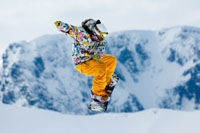
Aonach Mor/Nevis Range ia a mountain biking paradise. It holds the world mountain bike championship each year, has high wire activities and also has a gondola to take skiers and snow boarders or summer visitors up the mountain www.nevisrange.co.uk
Be it exploring Glen Mallie, seeking out the Chequered Skippers at Allt Mhuic or following the trails along the River Arkaig there is wonderful walking for all interests and abilities in the local Loch Arkaig area and throughout Lochaber www.walkhighlands.co.uk . Achnacarry is situated within close proximity to many "Grahams", "Corbetts" and "Munros" including Glas Bheinn (732m), Beinn Bhan (796m) and Meall na Teanga (918m) not to mention Ben Nevis (1344m), the highest mountain in the U.K. www.ben-nevis.com
Ascending Ben Nevis by the Tower Ridge or Point Five Gully or single pitch climbing in Glen Nevis it can not be denied, Lochaber is home to some incredible climbing and moutaineering challenges. In addition there is an indoor climbing facitlity in Kinlochleven, the Ice Factor www.ice-factor.co.uk , which has the UK's largest Ice climbing wall.
Cycling - Be you Roadie or a Mountin Biker we have it all, ideally situated for accessing the trails at Nevis Range or Wolftrax, the ride up to the end of Loch Arkaig and back gives a great challenge to any Road Seeker, or if your heading to Lochaber to take part in an event such as the Tour de Ben or Lord of the Lochs Sportive ( www.nofussevents.co.uk ) or hear to watch one of the races at Nevis Range we're here for all your accommodation needs. We also provide undercover cycle racks and should you require it bikes can be hired by the day from Nevis Cycles www.neviscycles.com
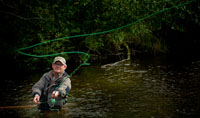
There is golfing at nearby Spean Bridge www.speangolf.org.uk .
Pony trekking and horse riding is available for all abilities at Newtonmore www.newtonmoreridingc entre.co m .
Wildlife tours, fishing, clay pigeon shooting, deer stalking with a camera or in season with a rifle are all available on the doorstep - visit www.achnacarrycountry.co.uk . www.wildwestsafari.co.uk
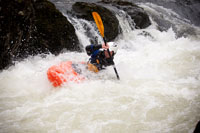
Lochaber is a mecca for Kayaking and as such Achnacarry is ideally suited for those wanting to access some of the challenging white water we have to offer including the Arkaig, Spean, and Loy all within a few minutes drive of the apartments. In addition we are situated between Loch Arkaig and Loch Lochy so easy access to suitable waterbodies for a more gentle day out. For assistance with you kayaking needs contact
www.rockhopperscotland.co.uk or www.highland-mountain-guides.co.uk/ .
The Jacobite steam train from Fort William to Mallaig is a great day out and details can be found on www.westcoastrailways.co.uk .
Fort William has a swimming pool, gym, ten pin bowling, golf, archery and a varity of shops and supermarkets
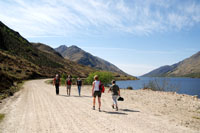
Beautiful Scenery is within easy reach - Glencoe, the silver sands of Morar, Skye and the Western Isles, historic Glenfinnan and the Great glen way etc.
There is the fascinating Clan Cameron Museum at Achnacarry created by the current chief of Clan Cameron and his wife and which holds many items of interest including the last kilt worn in action by a Scottish soldier (a Queen's Own Cameron Highlander), Bonnie Prince Charlie's waistcoat, Catherine Cameron's bridesmaid dress from the 1981 royal wedding, crockery from James Cameron's film "Titanic" and much more. Visit www.clancameronmuseum.co.uk/ or for more information about the clan cameron visit www.clan-cameron.org or www.clancameron.org.uk/ .
Places to eat
For those who want to sample local fare we can recommend; The Old Pines Restaurant and Russels Restaurant in Spean Bridge ; Letterfinlay Lodge Hotel and Corrigour Lodge Hotel, Loch Lochy side; The Crannog for seafood and shellfish and Browns Restaurant Nevis Bank Inn in Fort William, or for a special occasion the gourmet michelin starred Inverlochy Castle Hotel
Local Hotels also offer a carry out meal service and an excellent local caterer will deliver quality prepared meals to your door -sample menus are included in guest information folders.
We've noticed that you're using an out of date browser. We recommend that you update to the latest version to enhance your browsing experience.
Availability Search for Achnacarry Steading
Terms & conditions.
This booking system and any information appearing on this page relating to the availability of any accommodation is provided by third parties and not by VisitScotland. It is intended to provide real time availability information relating to accommodation which is also provided by third parties. You may use this booking system to place direct bookings with third party accommodation providers. Any booking you make will not be placed with VisitScotland and we will have no liability to you in respect of any booking. If you proceed to make a booking you will leave our Website and visit a website owned and operated by a third party. VisitScotland does not have any control over the content or availability of any external website. This booking system and any information appearing on this page is provided for your information and convenience only and is not intended to be an endorsement by VisitScotland of the content of such linked websites, the quality of any accommodation listed, or of the services of any third party.
Achnacarry Steading
Welcome to Achnacarry. Whether you want to relax in the solitude of the most breathtaking scenery in Scotland or take part in the multitude of outdoor activities that Lochaber and Fort William can offer, we invite you to stay at Achnacarry.
This quality and quite unique self catering holiday accommodation is located on the Ancestral home of the Clan Cameron and historic highland estate of Achnacarry.The 19th century converted former stone steading or farm building has been sympathetically renovated to provide four very individual and generous holiday apartments retaining the traditional exterior with state of the art modern interiors providing everything you need for a first class self catering holiday in the West Highlands. Achnacarry is off the beaten track and in a relatively undiscovered area but is central for touring North to Inverness, East to the Cairgorms, West to the Isle of Skye and Mallaig and South to Glencoe and Oban. The nearest town is Fort William 12 miles away - The Outdoor Capital of the UK.
Comprising of 2, two bedroom and 2, three bedroom apartments situated in the centre of this stunning highland estate and close to Achnacarry Castle, the apartments individually sleep 1-6, perfect for singles, couples, families and groups Booked altogether they provide accommodation for up to 20 people and with the option to rent the nearby village hall also provide the perfect getaway for family or group functions and holidays. Boat launch and mooring plus fishing ( by permit), country pursuits, section walks directly onto the Great Glen Way, wildlife watching, touring and just relaxing in this wonderful peaceful location are all available here. The Clan Cameron Museum is onsite where you can learn all about the estate's Clan history as well as the history of Achnacarry as a training camp for commandos during WW2 - Castle Commando.
Guests are welcome to bring their own boats, kayaks, canoes, bicycles, fishing equipment, skis etc as we have plenty of storage, cycle racks and a secure drying room for guest use. Barbques and picnic tables are provided for guest use,
You can book by the week online via our website. Short breaks are sometimes available - please enquire by telephone for availability.
We look forward to welcoming you to Achnacarry !
Transport and Parking
- No Pets Allowed
- Internet Access
- Towels Provided
- Laundry Facilities
- Ironing Facilities
- Washing Machine
- Tumble Dryer
- Picnic Area
Payment Methods
- Credit Card
- Mountains area
- Lochside Location
Note: Prices are a guide only and may change on a daily basis.
Cookies are required to view this content. Change your preferences at Manage Cookie Settings
The content of many of our web listings is provided by third party operators and not VisitScotland. VisitScotland accepts no responsibility for (1) any error or misrepresentation contained in third party listings, and (2) the contents of any external links within web listings ((1) and (2) together hereinafter referred to as the "Content"). VisitScotland excludes all liability for loss or damage caused by any reliance placed on the Content. The Content is provided for your information only and is not endorsed by VisitScotland.
What's Nearby
Attractions, food & drink, terms and conditions.

IMAGES
VIDEO
COMMENTS
Story of the key role of Achnacarry as a WW2 training centre for Commandos; Clan history archives and reading room; Gifts for sale featuring the clan Cameron crest or tartan can be found in our shop; Local Historic Sites. ... to arrange your visit. Summer: 1 April 2024 - 15 October 2024
The castle that you can see today is 'New Achnacarry' which built near the same site in Scottish Baronial style in 1802. The current Chief of Clan Cameron, Donald Cameron of Lochiel but traditionally known simply as 'Lochiel', lives in Achnacarry. The castle is not usually open to the public, but you can visit the fascinating museum ...
Achnacarry (Scottish Gaelic: Achadh na Cairidh) is a hamlet, private estate, and a castle in the Lochaber region of the Highlands, Scotland.It occupies a strategic position on an isthmus between Loch Lochy to the east, and Loch Arkaig to the west.. Achnacarry has a long association with Clan Cameron: Sir Ewen Cameron of Lochiel built the original castle in 1655.
History. Achnacarry is the seat of the chiefs of Clan Cameron. The Cameron clan is one of the proudest and most romantic clans in Scotland. From its beginnings in the middle ages, the Clan's early history is notable for the constant battle for possession of land in Lochaber claimed, at different times, by various clans and most notably by the Clan Mackintosh with whom the Cameron's feuded for ...
A visit to Achnacarry Castle provides an immersive experience, allowing visitors to explore its storied halls, discover hidden corners, and appreciate its enduring charm. Discover the captivating allure of Achnacarry Castle and immerse yourself in a bygone era. History of Achnacarry Castle. Achnacarry Castle: A Rich Historical Account
Achnacarry Castle Details. Achnacarry Castle, ruins of C17 tower house of Camerons destroyed C18; also occupied C19 mansion of same name. Within the grounds of Achnacarry House is an isolated stone chimney stack which is all that remains of Achnacarry Castle, believed to have been erected in the 17th century for Ewan Cameron of Lochiel, chief ...
Not far from Achnacarry Castle is a very special natural feature known as Ka-aig Falls, an interesting waterfall which splits into two before the waters fall into the river below and then flows under a 17th century stone bridge, filmed in the Hollywood blockbuster Braveheart. This is a popular location for an outdoor wedding.
He built Achnacarry Castle in around 1655 in a strategic position on the isthmus between Loch Lochy and Loch Arkaig. With Sir Ewen's death in the early 18th century his son John Cameron became Clan Chief, soon after which his son, Donald would assume Achnacarry when Lord Lochiel (as his father was known) fled into exile in Flanders after the ...
Visit Achnacarry Castle and the Clan Cameron Museum. ... The army made great use of Achnacarry Castle during WWII, with the blessing of the chief of the Camerons. Special Forces used it as the secret base and centre for training in Britain and as a result it became known as Castle Commando, In order to commemorate these heroic soldiers the ...
Achnacarry itself was "wounded in action" during the commando's visit; on November 5, 1943 a fire broke out, gutting its entire center and roof. The roof would be replaced in tin by the military and Lochiel would be somewhat compensated for the loss.
The remains of Achnacarry House, 140.0m west of the present mansion, consist solely of an ivy-covered chimney, built of dressed stone of mixed sizes, well mortared together. It is in good condition and shows signs of having been restored and rebuilt in part. It measures 4.0m by 1.3m, and is about 8.0m in height.
Achnacarry is situated off the B8005 some 14 miles (22.5km) north-east of Fort William. The house lies on the south side of the River Arkaig about 1 mile (1.5km) from the south-western shore of Loch Lochy. The policies lie within the river valley between the hills of Lochiel Forest which rise up to Beinn Bhan 2,612' (796m) in the south, and the ...
The most famous of them all was Achnacarry, the seat of the Cameron clan, located 15 miles north of Fort William and, from 1942-45, home to more than 25,000 men who passed the five-week commando ...
The Original Achnacarry Castle. Sir Ewen "Dubh" Cameron of Lochiel abandoned the highly disputed Tor Castle in the 16th century. Sir Ewen Cameron wanted a "more convenient" house, which was further removed from their enemies with Clan Mackintosh, Clan Campbell and Oliver Cromwell's garrison at Inverlochy Castle all being nearby Tor Castle.
Tour Scotland travel video, with Scottish music, of Achnacarry Castle on ancestry visit to the Scottish Highlands. This Scottish castle is the ancestral home...
Tour Scotland video of photographs of Achnacarry Castle on visit to the Scottish Highlands. This Scottish castle is the ancestral home of the chiefs of Clan ...
Tour Scotland 4K travel video, with Scottish music, of Achnacarry Castle on ancestry, genealogy, family history visit to the Scottish Highlands. This Scottis...
Organisation: Historic Environment Scotland (HES) Alternative name(s): Achnacarry House Canmore ID: 23732 Site type: Castle (medieval), Military Camp (second World War) County: Inverness-shire Parish: Kilmallie Council: Highland
A visit to Aboyne Castle is a journey through time, a chance to witness the timeless allure of Scottish architecture and uncover centuries of fascinating stories. ... Key Takeaways: Introduction Achnacarry Castle: Introduction Achnacarry Castle, a historic Scottish castle nestled among the picturesque Highlands, embodies a rich. Read More
Wildlife tours, fishing, clay pigeon shooting, deer stalking with a camera or in season with a rifle are all available on the doorstep - visit www.achnacarrycountry.co.uk. www.wildwestsafari.co.uk. Lochaber is a mecca for Kayaking and as such Achnacarry is ideally suited for those wanting to access some of the challenging white water we have to ...
Comprising of 2, two bedroom and 2, three bedroom apartments situated in the centre of this stunning highland estate and close to Achnacarry Castle, the apartments individually sleep 1-6, perfect for singles, couples, families and groups Booked altogether they provide accommodation for up to 20 people and with the option to rent the nearby ...